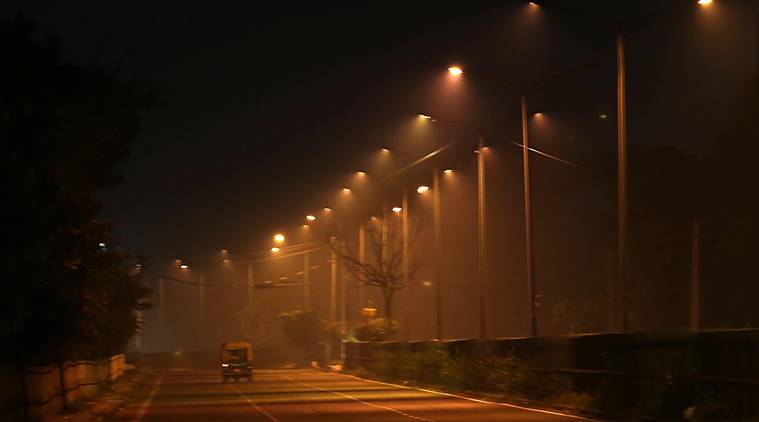 Post 11 pm on Diwali in Panchkula. (EXPRESS PHOTO/ Jaipal Singh)
Post 11 pm on Diwali in Panchkula. (EXPRESS PHOTO/ Jaipal Singh)
This Diwali was more polluted than the previous, which was celebrated on October 19, 2017, as per the data by Chandigarh Pollution Control Committee (CPCC). This time, respirable suspended particulate matter (RSPM) was reported higher than the previous year.
The CPCC, however, claims if we compare the Air Quality Index (AQI) of Chandigarh on November 7 with the corresponding day in 2017, the pollution is very low. The authority also claims that the main reason behind the increase in noise
pollution was beating of drums instead of firecrackers.
Figures release by the CPCC show the Air Quality Index through RSPM reported at three locations — Sector 22 (residential), Sector 17 (commercial) and Sector 12 (silence zone) — was 311 microgram per cubic metre, 177 microgram per cubic metre and 297 microgram per cubic metre respectively as compared to 240, 137 and 247 micrograms per cubic metre during the previous year’s Diwali.
The RSPM level recorded this time in Sector 22 was around two times more than the permissible limit of 100 microgram per cubic metre. The data was gathered between 6 pm and midnight. In the silence zone, the equipment was installed within 100 metres from a dispensary in Sector 12.
Debendra Dalai, vice-chairman of CPCC, said a comparative data of the AQI at Sector 17 and Sector 12 taken on November 7, 2017, and the same day this year, shows a sharp decline this time.
“Compared to the AQI of 177 and 297 micrograms per cubic metre at Sector 17 and Sector 12 respectively on November 7, the AQI was 362 and 306 during the previous year on the same day. An important factor to be taken into consideration is that Diwali was celebrated last year on October 19, 2017, when the temperature was 23.5 degrees Celsius (at 8.00 pm), compared to 16.6 degrees Celsius on November 7 this year. The temperature is an important factor contributing to the rise in the AQI. Indeed, if we compare the RSPM level between this Diwali and the previous year’s, the Air Quality Index deteriorated this time,” he said, adding the field staff of the CPCC had observed that people had beat drums this time more than bursting the firecrackers, which had increased the level of noise pollution this time.
The level of the noise pollution was recorded at 74.4 decibel between 8 pm to 9 pm Wednesday in Sector 12 and on 2017 Diwali, it was 63.6 decibel in the silence zone. Between 9 pm and 10 pm, the level of noise pollution was 83.1 decibel, higher than the previous year, which was 64.2 decibel.
In Sector 17 (commercial zone), the noise was 66.9 decibel between 8 pm to 9 pm Wednesday and last year, it was 66.3 decibel, which shows a marginal increase. Between 9 pm and 10 pm, 69.7 decibel was reported this year and last time, it was 62.3 decibel.
In Sector 22 (residential zone), 80.8 decibel noise was reported last year between 8 pm and 9 pm and this time, it was 80.3 decibel, a marginal difference. Between 9 pm and 10 pm, noise was 82.6 decibel this Diwali and last year, it was 84.8 decibel.